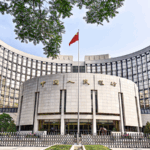The yield on 30-year U.S. Treasury bonds has surged past 5%, reigniting global concerns about America's long-term fiscal stability. Former U.S. Treasury Secretary Lawrence H. Summers warns this milestone reflects deepening doubts about Washington's ability to manage its $33 trillion debt burden amid persistent federal deficits.
Summers, a key figure in multiple U.S. administrations, emphasized that bond market volatility signals urgent challenges for the world's largest economy. \"When long-term borrowing costs rise this dramatically, it forces us to confront hard questions about debt sustainability,\" he noted, highlighting risks to the U.S. dollar's stability as global reserve currency.
For Asia-focused investors and policymakers, the developments carry significant implications. Rising U.S. borrowing costs could tighten global capital flows, potentially affecting emerging markets and export-driven economies across the region. Business leaders are closely monitoring how shifting U.S. fiscal conditions might impact dollar-denominated trade and investment strategies in Asia.
Academics point to historical parallels with debt ceiling crises, while diaspora communities watch for potential ripple effects on remittance flows and currency exchange rates. The situation underscores the interconnected nature of modern global finance, where Washington's fiscal decisions reverberate through Asian markets and beyond.
Reference(s):
cgtn.com








